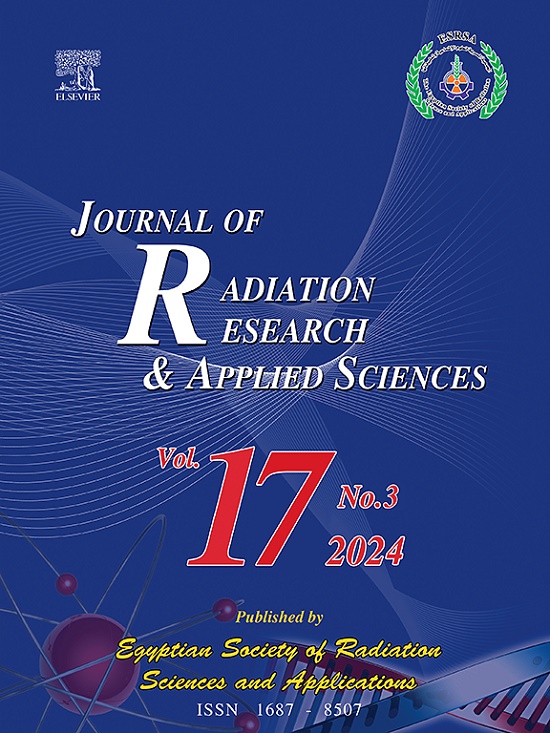热辐射强化纳米流体对称圆柱传热动力学特性研究进展
IF 1.7
4区 综合性期刊
Q2 MULTIDISCIPLINARY SCIENCES
Journal of Radiation Research and Applied Sciences
Pub Date : 2025-05-09
DOI:10.1016/j.jrras.2025.101571
引用次数: 0
摘要
如今,由于设备开发需要更高的效率和有效性,当代机械的热组件需要密切关注。从那时起,热工程领域的研究人员创造了通过结合被动策略来增强传热的方法。现有的科学研究表明,一些研究已经探讨了如何充分利用长表面、对称圆柱体和纳米流体(NFs)。这项工作涵盖了各种延长表面形式和NFs在多种应用中的混合影响。讨论了不同类型的热效率、体积浓度、翅片形状和流动条件,以及它们各自对热效率的影响。实验结果表明,表面活性剂纳米颗粒体积浓度和雷诺数对传热效果的影响显著提高。实验表明,当纳米颗粒体积浓度达到一定水平时,传热能力增强。密度大、弹性大的物质在浓度大于最优值时,会表现出较小的布朗运动。对延长表面的最新研究揭示了每个翅片设计的独特特性,这些特性会影响液压和热性能。因此,翅片使用对压降的影响是研究人员设计新型翅片形式的主要考虑因素。这两种策略的结合对NFs和扩大的表面产生了显着的效果。特殊的结果可能以相对较低的操作成本满足所采用技术的要求。本文章由计算机程序翻译,如有差异,请以英文原文为准。
Applications review on dynamical characteristics of heat transfer enhancement by thermal radiation on nanofluids flow via symmetrical cylinders
These days, with the need for greater efficiency and effectiveness in device development, the thermal components of contemporary machinery require close attention. Since then, researchers in this area of thermal engineering have created methods for enhancing heat transmission even more by combining passive strategies. The available scientific research indicates that some studies have looked into how to make the most of long surfaces, symmetric cylinders, and nanofluids (NFs). This work covers the mixed impacts of various prolonged surface forms and NFs across multiple applications. There is a discussion of the kinds of NFs, volume concentration, fin shape, and flow conditions, along with their respective impacts on thermal efficiency. It was determined that the impact of the volume concentration of surfactant nanoparticles and Reynolds number significantly improved the effectiveness of heat transfer. The experiments indicate that increasing the nanoparticle volume concentration to a specific level enhances heat transfer. Denser and more elastic substances would exhibit smaller Brownian motions at concentrations greater than the optimal value. The latest examination of prolonged surfaces revealed unique characteristics of each fin design that influence hydraulic and thermal properties. Thus, the impact of fin use on pressure drops is the primary consideration for investigators designing novel fin forms. The combination of both strategies yielded remarkable outcomes with the NFs and enlarged surfaces. The exceptional outcomes could potentially satisfy the requirements of the engaged technique at a relatively low operating cost.
求助全文
通过发布文献求助,成功后即可免费获取论文全文。
去求助
来源期刊

Journal of Radiation Research and Applied Sciences
MULTIDISCIPLINARY SCIENCES-
自引率
5.90%
发文量
130
审稿时长
16 weeks
期刊介绍:
Journal of Radiation Research and Applied Sciences provides a high quality medium for the publication of substantial, original and scientific and technological papers on the development and applications of nuclear, radiation and isotopes in biology, medicine, drugs, biochemistry, microbiology, agriculture, entomology, food technology, chemistry, physics, solid states, engineering, environmental and applied sciences.
 求助内容:
求助内容: 应助结果提醒方式:
应助结果提醒方式:


